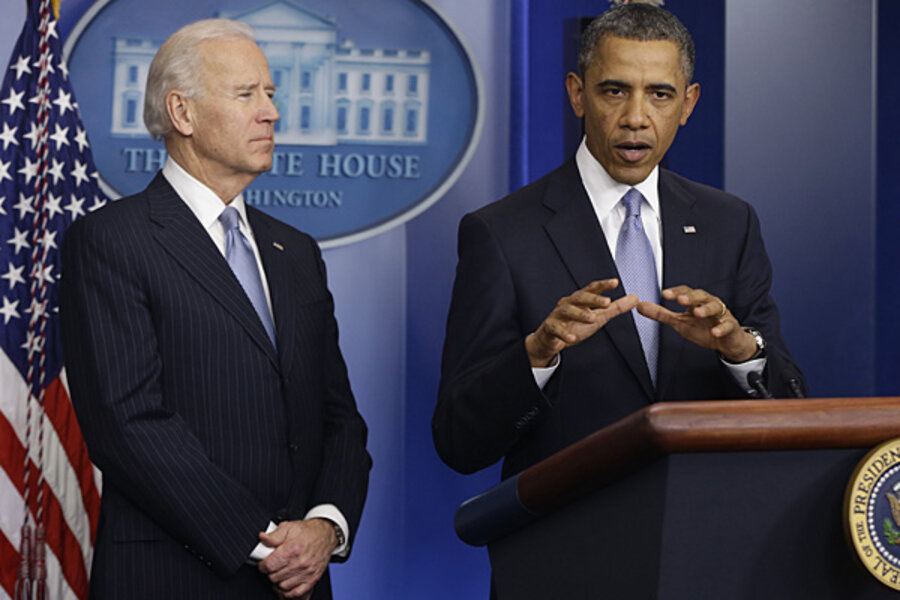Over the fiscal cliff. Sort of.
Loading...
It’s as if we’ve just survived a near-death experience. (Image above from NPR.) Like we followed the light and even saw the pearly gates and then miraculously were sucked back down into our bed overnight! We technically “went over” the fiscal cliff at midnight yesterday, and yet here we are today celebrating more extended tax cuts as the best way our policy leaders know how to compromise.
The debate over the fiscal cliff and all the scariness about it was far more about how we would manage to avoidour own prior commitments to reducing the deficit rather than what was intended to be a push for greater fiscal responsibility and at least a longer-term and thoughtful (rather than immediate and brute-force) strategy for deficit reduction.
So what has come out of this fiscal adventure? The Washington Post’s Ezra Klein (in his “Wonkblog”) stayed up for the finale to post a nice summary of what was agreed to, “everything you need to know about the fiscal cliff deal.” Most of the press accounts characterize the deal as the Republicans eventually caving on raising taxes on the rich. But the Brookings Institution’s Bill Gale points out that taxes are actually going way down, not up, relative to our one-day, near-death experience of the current law baseline–and thank goodness for the Republicans, because technically the minority of them who voted in favor of the deal did not violate the No New Taxes pledge.
The Congressional Budget Office tells us how big a tax cut it is, relative to current law revenues; the answer is it’s a $3.639 trillion tax cut over ten years. Just for perspective, that’s well more than double the initial ten-year cost of the Bush tax cuts (of approximately $1 1/2 trillion) when they were first passed in 2001. Of course, when the Bush tax cuts were originally passed, the official cost was a huge understatement of the real cost because of: (i) an expiration date before the end of the ten-year budget window, and (ii) the offsetting revenue increases scheduled to come in from the Alternative Minimum Tax (AMT), as more people were pushed onto the alternative tax when their ordinary income tax liabilities fell. Over the years we learned to “fix” those features that held down the cost, by continuing to extend and deficit finance not only the original Bush tax cuts but also the AMT relief needed to prevent the Bush tax cuts from increasing AMT burdens. And so we did in this cliff deal as well; the $3.639 trillion cost includes permanent extension of almost all of the Bush tax cuts pluspermanent AMT relief.
But of course, everyone always disses the current law baseline as totally unrealistic (even though it was in fact the reality of current tax law before the Bush tax cuts), so for more perspective, let’s throw in CBO’s “alternative fiscal scenario” (which is similar to the Concord Coalition’s “plausible baseline”) into the comparison. From Table 1-6 in CBO’s latest budget and economic outlook, they show that the difference in revenues between current law and the “alternative fiscal scenario” (extended and deficit-financed tax cuts) is $5.082 trillion over ten years. So the cliff deal, by reducing revenues by $3.639 trillion over ten years relative to current law, basically drops revenues by 71.6% of that difference. In other words, tax policy under the deal is far closer to “business as usual” (extended and deficit-financed tax cuts) than to the current-law baseline standard.
So in two days we’ve gone over the cliff and back again, and although we’ve made some progress raising taxes on some people (the top 1%) as a result of this fiscal adventure ride, I feel that by permanently extending the great bulk of the Bush tax cuts, we’ve made it permanently harder, politically, to raise taxes (whether through higher rates or base broadening) on anyone else ever again.
(PS: Happy New Year! Stay tuned for an important announcement from me within the week.)








